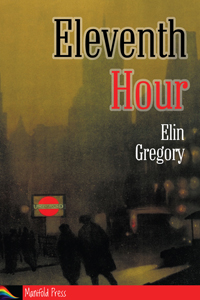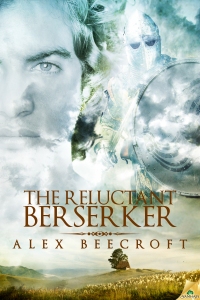When people ask me what I write, I usually say: “Penny dreadfuls. But they cost more than a penny and aren’t dreadful.”
A historian might point out that this statement is not really correct (and some may argue that, indeed, my writing is quite dreadful), because penny dreadfuls firmly belong in the 19th century, while I aim for an 18th century feeling. Amandine de Villeneuve’s woodcut-like illustrations for my books are in the style of the 18th century, too. And in the 18th century, it was the chapbook that ruled the readership.
Penny dreadfuls were stories published in parts over a course of several weeks, costing one penny each. And for that, the 19th century teenager got Adventure! Drama! Swordfighting! Highwaymen! Pirates! Vampires! A damsel in distress! Spring-heeled Jack and Knights of the Road!

The Victorians did a pretty thorough job at cleaning up the act of the “Penny Merriments”. There was also a shift in the readership. While chapbooks had been read by all ages and classes, penny dreadfuls were mostly aimed at male teenagers with a working class background.
The origins of the chapbook can be tracked back as early as the 1600s, and it could be just about anything from religious pamphlet to printed gallows speech to folk tale to coverage of the Great Fire of London. The natural lifespan of a chapbook was short; due to its very poor paper- and print-quality, it usually ended as toilet paper. It was intended for quick consumption and disposal. As a consequence, much of our knowledge is guesswork. Luckily, Samuel Pepys was an avid collector, so at least a few copies survived the centuries. His collection is held at Magdalene College in Cambridge.
Given the nature of many chapbooks, it’s not surprising that Samuel Pepys, naval administrator, diarist and Lothario was so fond of them. To quote Steve from “Coupling”: “When man invented fire, he didn’t say, “Hey, let’s cook.” He said, “Great, now we can see naked bottoms in the dark!” As soon as Caxton invented the printing press, we were using it to make pictures of, hey, naked bottoms!”
Some months ago, the national press reported of a rare and exciting find:
STASH OF ‘SAUCY’ LITERATURE UNCOVERED AT HISTORIC LAKE DISTRICT HOUSE
“They often contained rather saucy and even rude tales, which were found to be very amusing by their 18th century readers.”
Here’s an excerpt from “The Crafty Chambermaid”, dating back to 1770; the tale of a chambermaid who tricks a young man into marrying her/of a London merchant who tries to romantically pursue a chambermaid (it depends on one’s point of view, I suppose…)

The Merchant he softly crept into the room,
And on the bedside he then sat himself down,
Her knees through the Counterpane he did embrace,
Did Bess in the pillow did hide her sweet face.
He stript of his cloaths and leaped into bed
Saying now lovely creature for thy maidenhead,
She strug led and strove and seemed to be shy
He said divine beauty I pray now comply.
Love and lust, presented in a raunchy, saucy and rude manner – what sells today also sold back in the 18th century. From erotic to pornographic: the chapbook catered to a great variety of needs and interests. And as this is the Macaronis-blog, the question begs to be asked: were there chapbooks with gay, lesbian or bisexual content as well?
Answer: as with so many details in history, we can only guess. There are some indications that such content was published, but one has to read between the lines, and there’s a significant difference in the way same-sex experiences were portrayed: what might have been acceptable for women was absolutely taboo for men.
Sexuality between women often featured in heterosexual erotica and pornography. However, this wasn’t a portrayal of sexual orientation, it wasn’t about lesbian or bisexual women: the ladies would always end up with the dashing hero in the end. The stories left no doubt that they were 100% heterosexual, and any same-sex experience only served the purpose of preparing a woman for “the real thing”, as an introduction to sexuality and preparation for her future (male) lover, often with the help of a more experienced woman.
In her book “Lascivious Bodies – A Sexual History of the Eighteenth Century”***, Julie Peakman writes:
“Thus, in erotica, the reader is guided through the rules of sexual initiation in a three-stage process: masturbation, lesbian sex and, finally, heterosexual intercourse.”
Women were expected to be loving and affectionate, so being loving and affectionate in public was normal. Correspondence between women that we’d think to be “love letters” today were not unusual. Society would often turn a blind eye when it came to very close friendships which may or may not have been of a sexual nature as well, especially if the ladies were discrete. The case was different for women who tried to wear the breeches (especially if those were equipped with artificial “yards”!) and threatened the superior status of men in society, though. But that’s for another day and article.
Now, even if scenes of lesbian sex were written with the erotic imagination of male readers in mind, I think it’s pretty safe to assume that they were consumed and enjoyed by female readers as well. In any case it was much easier for a woman to get her hands on such content than for a man to find erotica involving male-male sex.
Homosexual men – “sodomites” – were almost universally despised. In the hierarchy of society, they were at the very bottom. Sodomy was a crime punishable by death, so it would have been very risky to publish erotic material which portrayed male-male love in a positive light. “The most detestably sin of buggery” was sometimes brought up in a satirical way, but the connotation was always negative.
However – where there are customers, there are suppliers. Morals are good, but so is money. If a business could be made, it was very likely made, though not in public. An underground press for homosexual erotica – why not? After all, there was a potential audience. No matter how harsh the punishments and how determined the guardians of public virtue were in the prosecution of gay men: they still met, they still loved, they still had sex.
And if one looks at the professions of those “sodomites” who were brought to court, I wouldn’t be surprised in the least if we’d learn one day that, among the butchers and blacksmiths and clerks and furniture makers, there also were a typesetter and printer who weren’t caught…
*** Review to follow.

 Under Leaden Skies was released on 1st August, published by Manifold Press
Under Leaden Skies was released on 1st August, published by Manifold Press







 gency era is very elegant, with a strong emphasis on proper manners and spotless reputations. You get a mix of the extravagance of the Georgian era with the Victorian preoccupation with maintaining appearances. Makes for a very interesting time period to write in…at least I think so. And yes, I just had to throw the picture of Colin Firth from the movie Pride and Prejudice in there – I think Mr. Darcy just epitomized the Regency period. I’ve said it before and I’ll say it again, it really is a shame Mr. Darcy and Mr. Bingley never hooked up. They would have been so great together!!
gency era is very elegant, with a strong emphasis on proper manners and spotless reputations. You get a mix of the extravagance of the Georgian era with the Victorian preoccupation with maintaining appearances. Makes for a very interesting time period to write in…at least I think so. And yes, I just had to throw the picture of Colin Firth from the movie Pride and Prejudice in there – I think Mr. Darcy just epitomized the Regency period. I’ve said it before and I’ll say it again, it really is a shame Mr. Darcy and Mr. Bingley never hooked up. They would have been so great together!! examples from my own work, and from another author’s work. In
examples from my own work, and from another author’s work. In  Another example would be
Another example would be 





